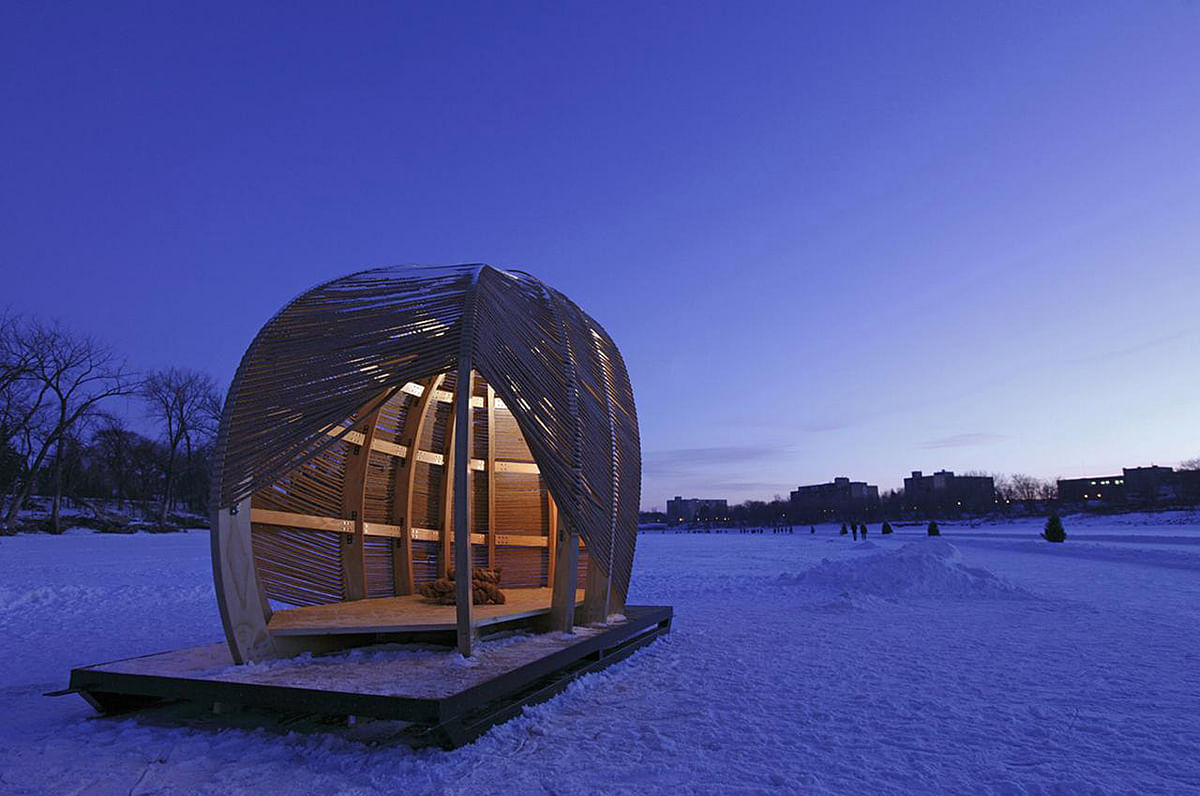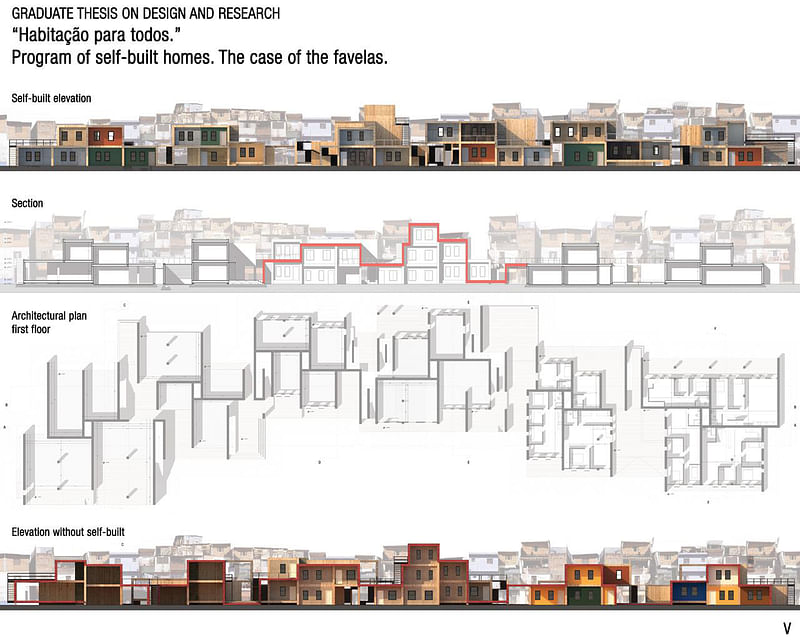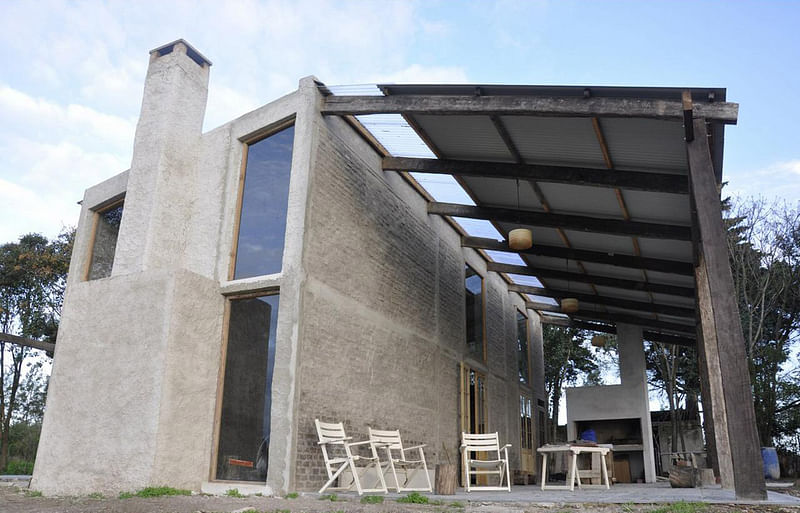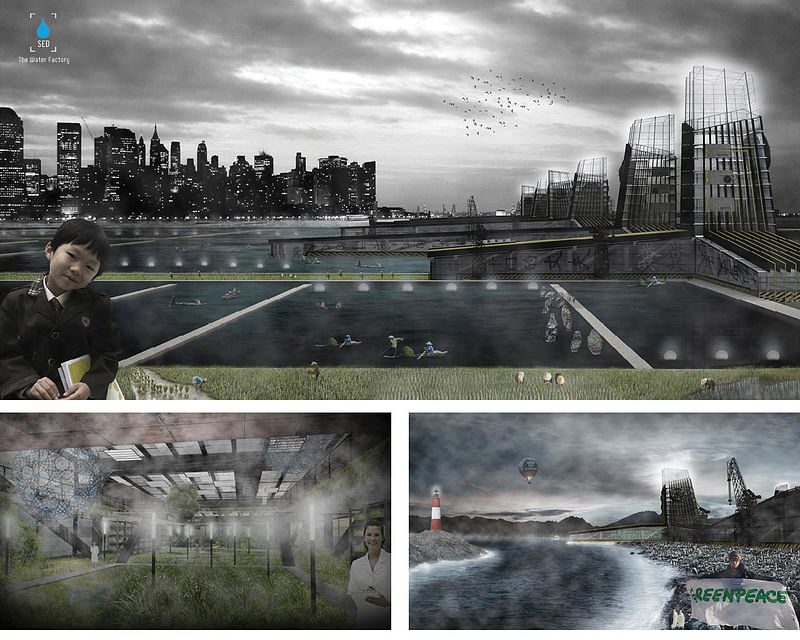NEXT LANDMARK Contest Announces Two Winning Projects
By Bustler Editors|
Wednesday, Jul 25, 2012

Related
Two projects have been chosen as respective category winners in the first NEXT LANDMARK Floornature International Contest. The competition, open to architects and designers who graduated after 2000, includes two categories: First Work for built projects and Research for unbuilt projects, ideas, reflections and graduating theses. The winners and special mentions will be featured at the NEXT LANDMARK event that will take place during the opening of the XIII Architecture Biennale in Venice.
Winner in the First Work Category:
Rope Pavillion by Kevin Erickson
Rope Pavilion is a warming hut built on the frozen skating trail of the Assiniboine River in Canada. The distinctive, dome-like shell - made from birch and rope - has the dual function of providing protection from the cold and blocking the winter winds, while still letting in sunlight. Rope Pavilion's application of natural materials and innovative form makes it a warm, welcoming hut for visitors that blends into its surroundings, with a multilayered rope exterior to collect snow and embed it further within the site. The project is the result of an intense prototyping process. Over 25 full-scale models were created to obtain the final form of the pavilion.
Jury comments: "A pint-sized gem, a hybrid hut in terms of concept and material, a promise for future development. A design concept for sustainable architecture that leaves its mark on its surroundings, at the service of the territory, without ravishing it. Here, architecture, design and landscaping are come together in a single, simple operation based on an outstandingly profound idea, reviving the relationship between object-architecture and man."


Winner in the Research Category:
Habitachao Para Todos by Elisa Minari
Research into the social system of the favelas of Brazil resulted in Habitachao para todos. The aim of the project is to change the way impoverished city areas are redeveloped with housing modules that give the cityscape a precise identity, creating new forms of interaction between public and private space. Based on self-building principles, Habitachao para todos proposes a variety of housing modules to match the economic means of inhabitants: 50% modules are composed of the structure and basic facilities only; 70% modules are semi-finished and include external walls and accesses; 100% modules come complete with inside walls as well.
Jury Comments: "Tenements, shanty towns, favelas are a significant social, demographic and economic problem and efforts to create simple housing solutions are vitally important in developing a new concept of social housing. The ethical approach to new housing and to new emergencies is expressed in this project through the synthesis of those signs that encompass the history of contemporary architecture."



The international panel of judges including Frits Van Dongen from de Architekten Cie, Nicola Leonardi, editor in chief of the magazine The Plan, Luca Molinari, Gianluca Peluffo from 5+1AA, Mariano Diotto from IUSVE, Graziano Verdi, Ceo of GranitiFiandre & Iris Group, and Paolo Schianchi, managing editor of Floornature.com also selected five Special Mentions from the 292 submitted competition entries.
Special Mention in the First Work Category:
Cultural Center by Olga Felip Ordis
The Cultural Center in Tortosa is the result of the redevelopment and extension of the old market in Ferreries. The project is developed on the nave of the old market, which was extended to connect with Joan Monclús square. The market and its extension interact through the innovative use of materials: the new, dark façade, composed of grooved structures, contrasts with the white nave, comprising harmonized lighting and timber beams on the walls



Special Mention in the First Work Category:
Wine Cellar Home by Studio LT
Wine cellar home is an open plan home designed as a relaxing weekend getaway. An old wine cellar was converted for this project, communicating with the surrounding rural landscape, and adding a contemporary touch to the format of the old building. The home has an open and a closed section, plus the addition of a passageway and kitchen & bathroom. The use of materials is particularly important, with the recovery of the original stone walls and timber roof on the one hand, and the use of more contemporary materials on the other.



Special Mention in the Research Category:
Blovstrød Town District by Matteo Battistini
The project for the Blovstrød district is based on the concept of how the landscape is perceived and of sustainable living. The launching pad for the whole project is vegetation, focusing on the human and community dimension of the space to improve the environmental, economic and social sustainability of living. The plan involves different types of green spaces that local inhabitants look after, turning the patio into the new center of the dwellings, to bring sun, air and nature into the homes.



Special Mention in the Research Category:
Exhibition Center of Otog by Kuan Wang
The goal of the Exhibition Center of Otog is to blend with the surrounding park and to become an integral part of it. The building houses four types of exhibition spaces, linked by the connecting systems. In fact, the idea behind the project is permeability and fusion of the different parts of the building and between interior and exterior. The façade varies due to the shading panels that change their tilt with the position of the sun. The roof is also designed as a continuously changing public square with a system of steps that act as both stairs and park, thanks to the green belt positioned on the edge.



Special Mention in the Research Category:
SED, The Water Factory by Mauro Barrio
SED aims to be a possible answer to the present social crisis. It is the prototype of a water system configured as a solution to the lack of freshwater thanks to its capacity to adapt to any environment. The goal of SED is to explore a new way of conceiving this type of infrastructure, to bring it closer to the needs of society and to exploit new methods to produce freshwater by desalinizing saltwater. This self-sufficient seawater treatment plant has been designed to emulate the working concept of oil platforms, built on a structure of honeycomb platform series.



All images courtesy of NEXT LANDMARK contest.

Share
0 Comments
Comment as :